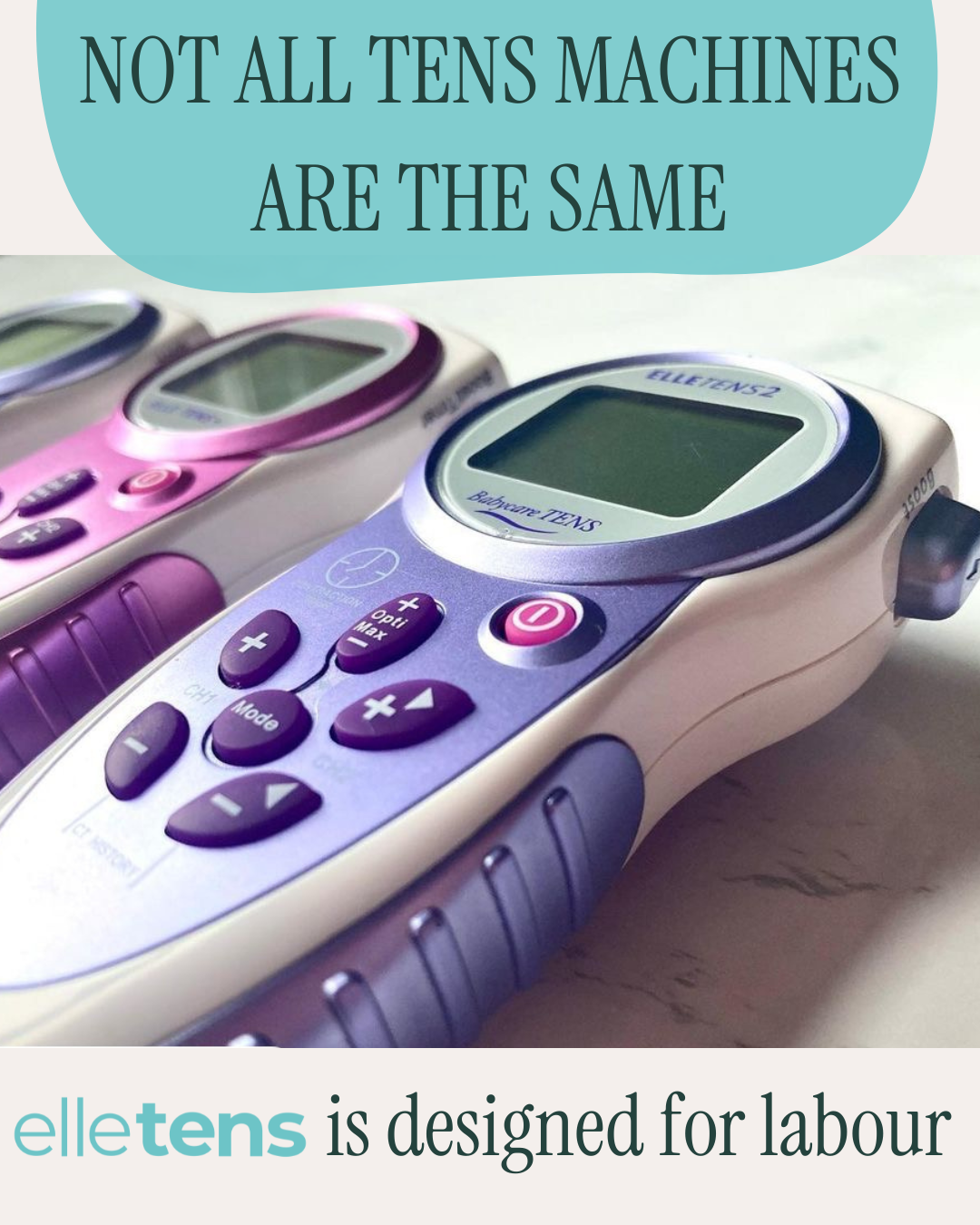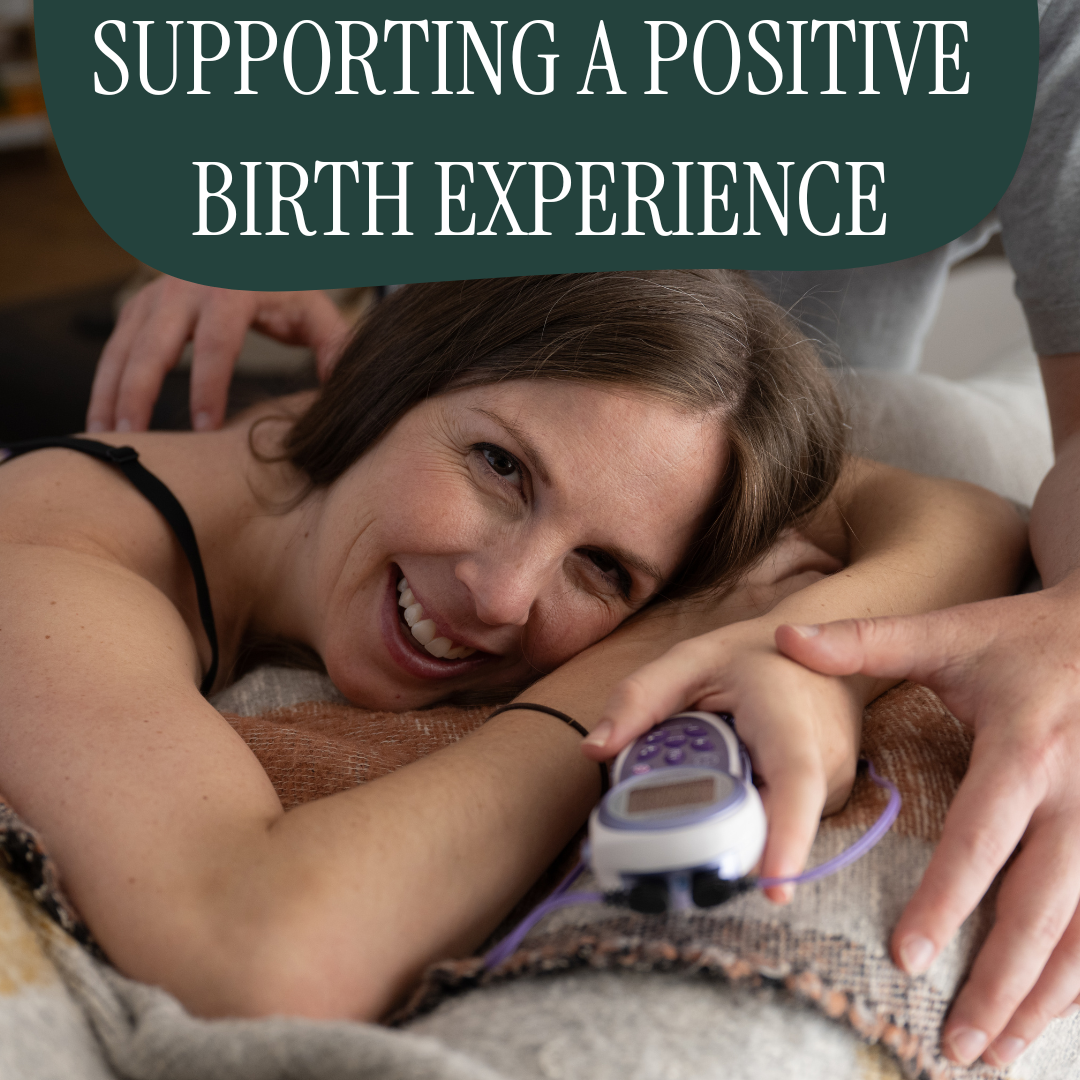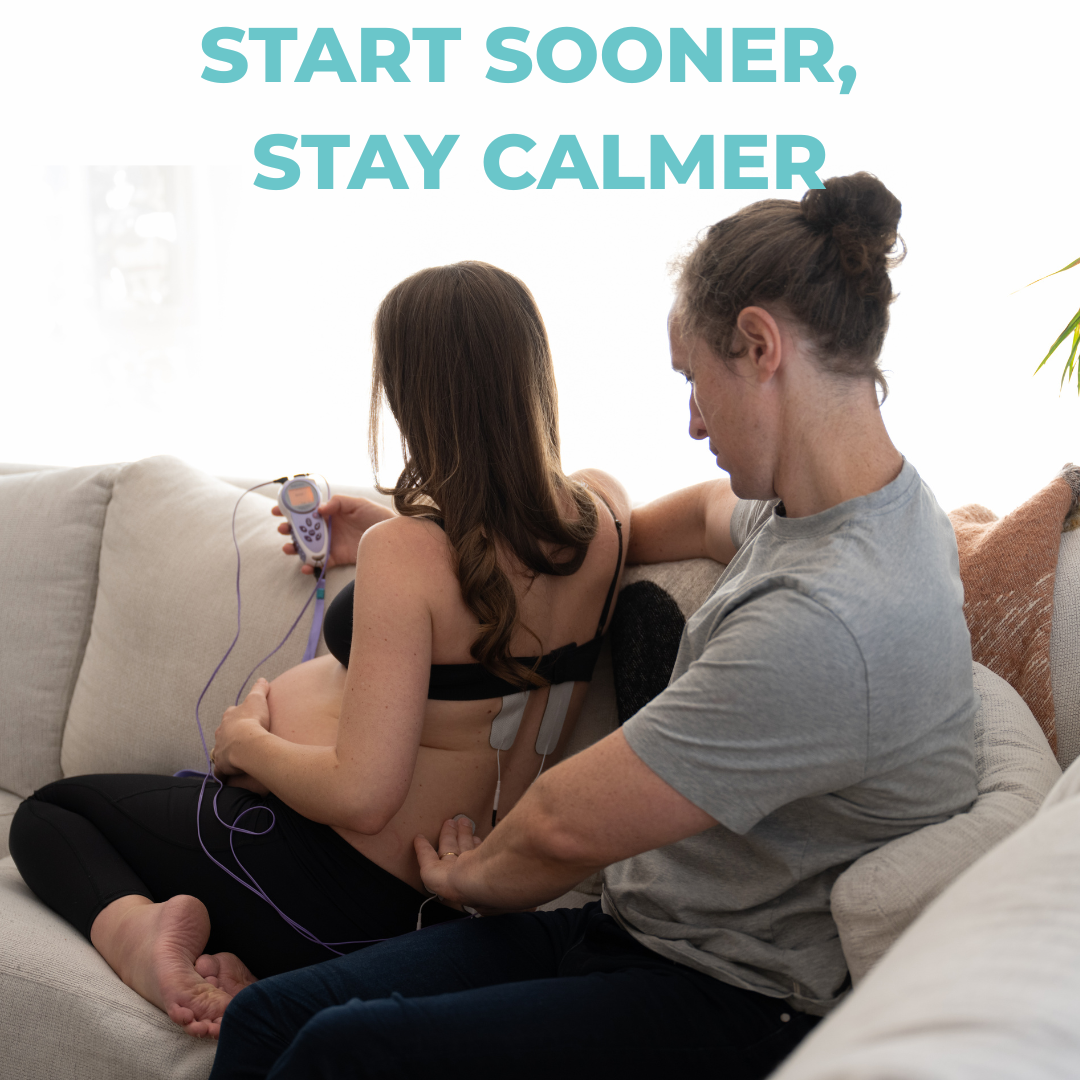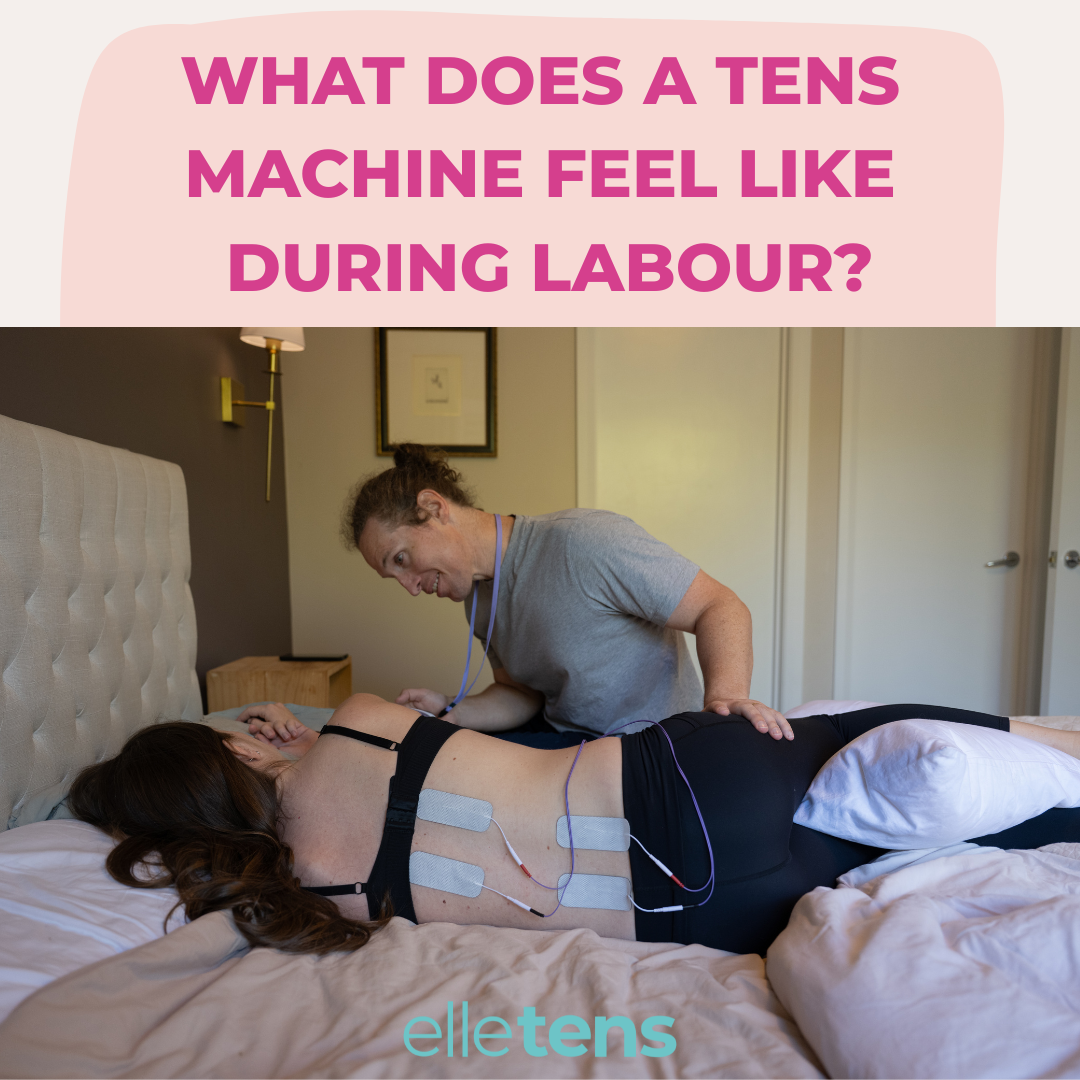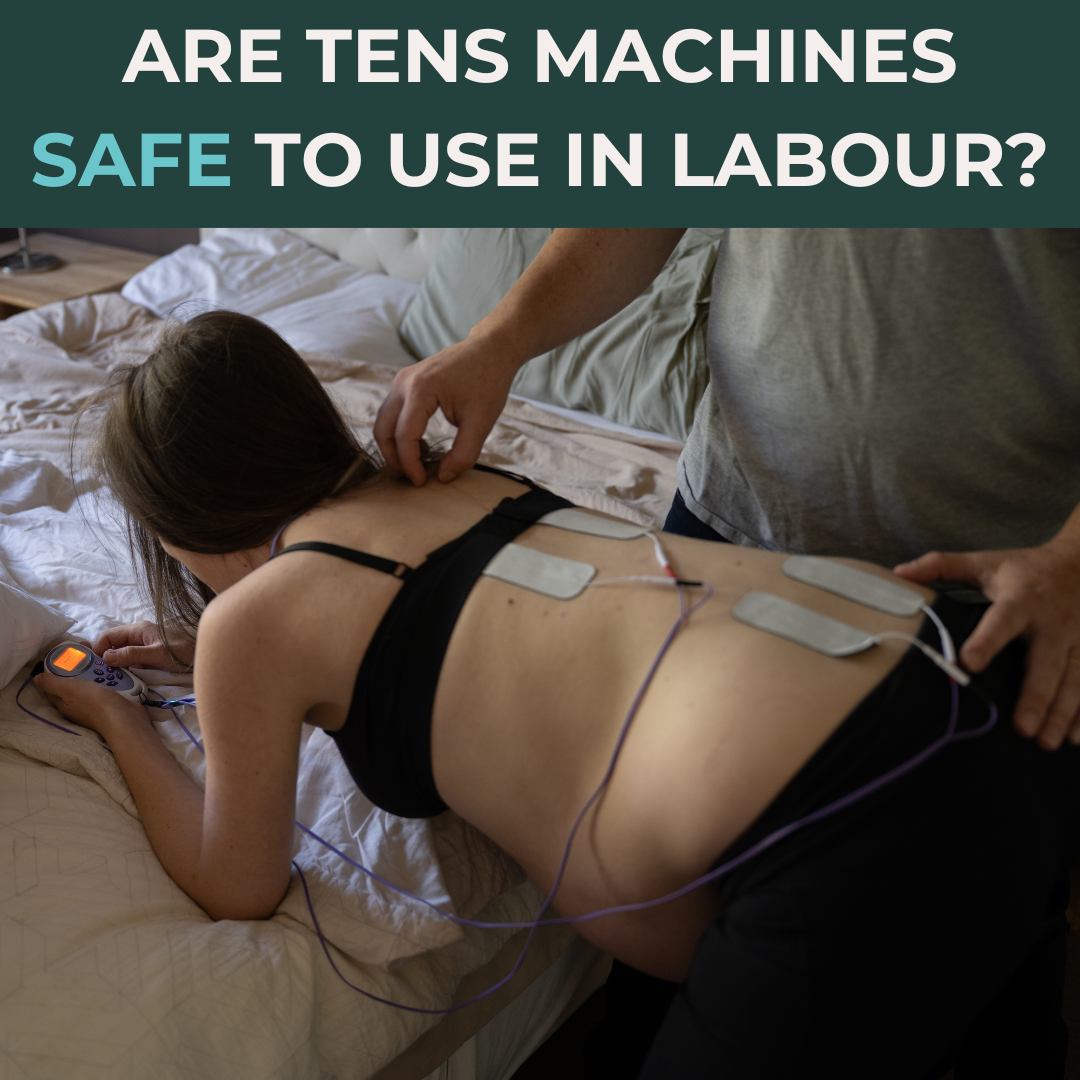Learn
Elle TENS vs. Standard TENS Machines: What’s the Difference?
Not all TENS machines are the same. While standard devices are built for general pain relief, Elle TENS is explicitly designed for labour. With features like the Boost button, labour-specific programs, and a lightweight portable design, Elle TENS helps mums feel calm, confident, and in control. Discover why 98% of women report reduced labour pain with Elle TENS, and explore whether hiring or buying is right for you.
Learn moreHow Elle TENS Supports a Positive Birth Experience
Discover how Elle TENS supports a positive birth experience with safe, natural pain relief and tools to help you feel calm, confident, and in control.
Learn moreElle TENS Plus: Pain Relief for Labour, Postpartum & Beyond
One Device. Three Stages. Endless Support. Pregnancy and birth are incredible journeys, but they’re not just about one day in the delivery room. Your body goes through stages: early labour, active birth, and the recovery period that follows. The Elle TENS Plus is designed for all of them. With three unique modes - Labour Mode, Pain Mode, and Pelvic Mode, it’s the only maternity TENS machine that supports you from your first contraction through postpartum recovery and beyond. Stage 1: Labour: Take Control from the First Contraction The Elle TENS Plus isn’t just for the pushing stage; it’s most effective when you start using it in early labour. How it helps during labour: Labour Mode includes two burst patterns—one for early labour, one for rapid contractions. The Boost Button delivers instant extra relief during a contraction. Opti-Max Technology lets you increase intensity for peak moments. The built-in Contraction Timer records length and intervals so you (and your midwife) know exactly where you’re at. It’s small, portable, and clips onto clothing, allowing you to walk, move, or change positions freely, making it ideal for home or hospital births. Stage 2: Post-Birth: Supporting Your Recovery Once baby arrives, the focus shifts to healing, adapting, and caring for your new little one. The Elle TENS Plus switches easily into Pain Mode, which delivers gentle, therapeutic pulses to: Relieve neck and shoulder tension from long breastfeeding or bottle-feeding sessions. Ease afterbirth pains (common as the uterus contracts back to size). Support healing after caesarean or vaginal birth by encouraging healthy circulation. Provide comfort for period pain when your cycle returns. Help with everyday aches and pains, from a sore lower back to tight calves after a long walk. And here’s a little secret: the Elle TENS Plus isn’t just for mums. With an extra set of electrodes, even your partner can use it to relieve tension, muscle stiffness, or post-workout soreness. This versatility means the Elle TENS Plus stays useful long after your hospital bag is packed away, helping you manage a wide range of aches, safely and naturally. Stage 3: Beyond: Long-Term Pelvic Health Childbirth can take a toll on your pelvic floor. The Elle TENS Plus includes Pelvic Mode, transforming it into a pelvic floor exerciser to: Strengthen muscles and improve bladder control. Aid recovery from incontinence or pelvic floor weakness. Support long-term core stability and confidence. This makes the Elle TENS Plus a smart investment, not just for birth, but for ongoing women’s health. Why Choose Elle TENS Plus Over Other Options? Unlike single-purpose TENS machines, Elle TENS Plus is a 3-in-1 solution: Labour Pain Relief: portable, drug-free, and midwife-recommended. Postnatal Recovery: comfort and healing support. Pelvic Floor Training: ongoing health benefits well after birth. It’s reusable, adjustable, and designed with women’s real experiences in mind. Get Ready for Your Journey Have your Elle TENS Plus ready by 36 weeks so you can practise using it before labour begins. With Elle TENS Plus, you’re not just preparing for birth, you’re setting yourself up for a smoother recovery and stronger future. Buy your Elle TENS PLus today!
Learn moreTENS Machine for Early Labour: Why It’s a Game-Changer
Labour doesn't always start with a bang; often, it's a slow build of contractions and uncertainty. That’s where using a TENS machine for early labour can be a total game-changer. Whether you’re at home waiting to head to the hospital or managing early signs of labour overnight, a TENS machine can provide natural pain relief, reduce anxiety, and help you stay in control. What Is a TENS Machine and How Does It Work? A TENS (Transcutaneous Electrical Nerve Stimulation) machine sends mild electrical pulses through electrode pads placed on your lower back. These pulses block pain signals, stimulate the release of endorphins (your body’s natural painkiller), and provide a welcome distraction from rising contractions. The Elle TENS 2 and Elle TENS Plus are specially designed for use in labour, with features like the Boost Button for contractions and clear pre-labour modes. Why Start Using It in Early Labour? There are several reasons why starting with a TENS machine in early labour makes a big difference: Earlier = More Effective: The sooner you start, the more effective the TENS can be. This allows your body to build up endorphins gradually. Comfort at Home: You can use the machine safely at home, helping you delay going to the hospital until you’re in active labour. Stay Calm and Focused: The soothing pulse patterns help many women relax through the uncertainty of early contractions. Feel in Control: Having a physical tool to manage discomfort can reduce feelings of fear or helplessness. 98% of women who use Elle TENS devices report reduced labour pain and early use plays a big part in that. Real Feedback From Real Women “Well what can I say being a first time mum, I was so unsure, a midwife had told me about it, I was starting to get what I thought was braxton hicks at 3.30pm. Little did I know it was the start to holding my son the next morning at 4am. The elle TENS carried me through until 12am that night all the way to the hospital, then with a little bit of gas on top of this little beautiful device, it then carried me through labour. I couldn't scream to the world any louder that this is a pregnancy MUST. Thankyou Elle TENS Team" - Stevee-lee B. Tips for Using Your TENS Machine in Early Labour Apply the pads as soon as you feel consistent contractions. Use the lowest setting first, and increase as needed. Familiarise yourself with the Boost Button; it’s perfect for peak contractions. Have your support person help with pad placement. Wear loose, comfy clothing and stay mobile while using it. Ready to Start Early, Calm and in Control? Using a TENS machine for early labour can help you feel confident, supported and in charge from your very first contraction. Whether you're planning a natural birth at home or a hospital birth with support, having your Elle TENS unit ready makes all the difference. You can hire a machine for a convenient and affordable option, or buy one to keep using it long after birth for period pain, postpartum recovery, or even future pregnancies. Explore our hire and buy options here and choose what works best for you.
Learn moreTENS Machine vs Other Labour Pain Relief: How Elle TENS Compares
Choosing the right pain relief method for labour is a big decision, and one that should be informed, personal, and flexible. If you're researching the differences between a TENS machine and other labour pain relief options, you’re not alone. From epidurals to breathing techniques, there are many ways to manage contractions. But more and more mums are turning to Elle TENS for a natural, empowering option that puts you in control, from the first contraction. In this blog, we’ll break down how a TENS machine for labour compares to other common methods to help you decide what feels right for your birth journey. What Is a TENS Machine and How Does It Help in Labour? A TENS machine (Transcutaneous Electrical Nerve Stimulation) uses gentle electrical pulses on your lower back to block pain signals and release endorphins. The Elle TENS range is specially designed for labour, with features like: Boost button for contractions Pre-set modes for each labour stage Compact, portable design Safe, drug-free relief from early labour onwards TENS vs Gas (Nitrous Oxide) Gas is often used in hospital settings and can take the edge off pain, but side effects like nausea or dizziness are common. Elle TENS advantages: No medication Safe to use at home Keeps you alert and mobile Works instantly with no wait time TENS vs Epidural An epidural offers substantial pain relief but often limits movement, can prolong labour, and comes with potential side effects. TENS advantages: No needles or medication Keeps you upright and moving Ideal for early and active labour No impact on baby or birth experience 💡 Did you know?98% of women report reduced labour pain using Elle TENS devices. TENS vs Hypnobirthing & Breathing Techniques Mind-body methods like hypnobirthing offer excellent emotional support, but may not provide enough physical relief on their own. TENS advantages: Enhances focus and breathing techniques Offers physical support with no side effects Puts you in control of each contraction 📍 You can combine your TENS machine with hypnobirthing techniques for extra comfort. Why More Mums Choose Elle TENS Elle TENS is trusted across Australia for its simplicity, effectiveness, and midwife-approved design. You can hire or buy your unit directly from our official website. ✅ Hospital bag essential✅ Safe for first-time and experienced mums✅ Quick, trackable delivery✅ Free returns on hire units Final Thoughts: Choose the Labour Pain Relief That Works for You There’s no “right” choice — only the choice that works best for you. Whether you’re aiming for a natural birth or want options to stay flexible, the TENS machine vs other labour pain relief conversation is one worth having. By planning and packing your Elle TENS early (by 36 weeks), you’ll be ready, no matter how your labour unfolds. 📎 Want to learn more about hiring your unit? Visit our Labour TENS Hire Page.
Learn moreWhat Does a TENS Machine Feel Like During Labour?
What Does a TENS Machine Feel Like During Labour? You’ve heard of TENS machines as a natural way to manage pain during labour, but what does a TENS machine feel like during labour, really? At Elle TENS Australia, we speak to hundreds of expectant parents every week, and one of the most common questions is:“What will it feel like when I use the TENS during labour?” Let’s break it down so you feel confident, prepared, and calm on the big day. What Does a TENS Machine Feel Like? A Gentle Pulsing Sensation When you first turn on the Elle TENS, you’ll feel a gentle tingling or pulsing sensation in your lower back. Most people describe it as: A light buzzing or vibration A rhythmic tapping or fluttering A soothing, massage-like pulse It’s not painful. In fact, many users say it’s relaxing and even enjoyable. You can adjust the intensity to your comfort level using the "+" and "–" buttons. This sensation is designed to intercept pain signals before they reach the brain and stimulate the release of your body’s natural pain relievers — endorphins. The Boost Button: Extra Relief When You Need It Most As your labour progresses, contractions intensify. That’s where the Boost button comes in. When a contraction starts, simply press Boost to change the pulse pattern to something stronger and more focused. This helps: Block out contraction pain Distract your brain from the intensity Give you a greater sense of control Once the contraction passes, press Boost again to return to the original setting. This feature works in rhythm with your body, giving you power in the moment. Still wondering what a TENS machine feels like during labour when contractions are at their peak? Many women describe it as an empowering tool, something that lets them ride the waves of each contraction with greater confidence. Real Experiences: What Other Parents Say Here’s how some Elle TENS users describe the sensation during labour: 💬 “It felt like a warm, pulsing massage across my back — really calming.”💬 “It was just enough to take the edge off. I didn’t need anything else for hours.”💬 “The Boost button was my best friend during contractions. I could time it perfectly and feel more in control.” While every labour is different, the feedback is overwhelmingly positive, mainly when the TENS is used from early labour. Tips for the Best Experience To get the most out of your Elle TENS: Start early: Use it as soon as you feel contractions beginning. Practice beforehand: Familiarise yourself with the controls in the weeks leading up to your due date. Use genuine electrodes: Quality pads ensure even sensation and safety. Pack it in your hospital bag: Be ready to go by 36 weeks, just in case. Ready to Experience It for Yourself? Whether you’re planning a natural birth or want to delay other interventions, the Elle TENS can be a powerful part of your pain management toolkit. Hire or buy your Elle TENS today from Australia’s most trusted TENS provider. Delivered straight to your door and ready when you need it most.
Learn moreAre TENS Machines Safe to Use During Labour?
If you’re exploring drug-free options for pain relief during birth, you’ve likely come across TENS machines. But one common question we hear is:“Are TENS machines actually safe to use during labour?” The short answer is yes. When used correctly and with genuine electrodes, TENS machines are a safe, proven, and trusted choice for labour support. Here's what you need to know. What Is a TENS Machine? TENS stands for Transcutaneous Electrical Nerve Stimulation. It works by sending small electrical pulses through electrode pads placed on your lower back. These pulses help: Block pain signals travelling to the brain Trigger the release of endorphins (your body’s natural painkillers) Offer a distraction and a sense of control during labour At Elle TENS, we supply the Elle TENS 2 and Elle TENS Plus, both specifically designed for maternity use. Is It Safe for You and Your Baby During Labour? Yes — when used as directed, TENS machines are safe for both mother and baby. They are: Drug-free, so no side effects or risks of drowsiness Non-invasive, with no internal devices or injections Completely under your control, thanks to the handheld design and boost button Widely recommended by midwives and physiotherapists across Australia TENS is ideal for early labour, whether you're at home or in hospital, and is a great way to delay or reduce the need for stronger interventions. Are There Any Situations Where TENS Shouldn’t Be Used? TENS should not be used: Before 37 weeks of pregnancy, unless under medical supervision On broken or irritated skin If you have a pacemaker or certain heart conditions (always check with your doctor) In the shower or bath (the unit is not waterproof) If you're unsure, speak with your midwife or care provider, but TENS is a safe and practical choice for most low-risk pregnancies. Why Genuine Electrodes Matter for Safety Using genuine Babycare electrodes, which come with every Elle TENS hire or purchase, is key for safe and effective use. These electrodes are: Latex-free and designed specifically for maternity use Packaged in sterile, barcoded pouches (not ziplock bags) Backed by rigorous quality control and Australian safety standards Counterfeit or non-genuine electrodes can reduce effectiveness and may irritate the skin or come unstuck during use. Feel Confident and In Control TENS machines are a safe, empowering option for managing labour pain, especially in the early stages. If you're looking for a low-risk, natural pain relief tool that gives you control, Elle TENS is a trusted choice for thousands of Australian parents. Ready to book your hire or buy your unit?Explore your options on our website and get birth-ready with confidence.
Learn moreWhen Should I Book My Elle TENS Machine Hire?
Using a TENS machine during labour is a smart and empowering way to manage pain naturally. One of the most common questions we hear is:“When should I book my TENS hire?” The best time to book your Elle TENS hire is around 30 weeks of pregnancy. Here’s why that timing matters, and how the process works from booking to return. Why Use a TENS Machine for Labour? Elle TENS is one of the most popular choices for labour pain relief in Australia. It’s a handheld, drug-free option designed specifically for maternity use. The Elle TENS 2 unit provides advanced features such as: Optimax technology for extra pulse power during contractions Boost button for instant pain relief control Pre-set modes tailored for labour A timer to help track contractions Using a TENS machine early in labour helps maximise its effectiveness, which means having your hire kit ready beforehand. When Should You Book Your Hire? We recommend booking your TENS hire between 30 and 32 weeks of pregnancy, with the goal of having it delivered by 36 weeks — around four weeks before your due date. This timing ensures: Reliable delivery to your home Guaranteed availability during busy seasons Time to read the instructions and feel confident using the unit Peace of mind knowing it’s packed and ready in your hospital bag If you ever need to extend your hire or arrange an earlier delivery, just get in touch — we’re always happy to accommodate your needs. What’s Included in the Elle TENS 2 Labour Hire Kit? Each hire kit includes everything you need for safe and effective use: 1 x Elle TENS 2 maternity TENS unit 1 set of genuine Maternity Babycare/Elle TENS electrodes 2 lead wires 1 Lanyard 2 brand new AA batteries Easy to follow instruction card Reply paid Aust Post label for easy, hassle-free returns Elle TENS Wetbag, yours to keep, great for popping on your stroller for those emergency nappy changes You’ll also receive a copy of A Women’s Guide to Drug Free Pain Relief, by Dr. Gordon Gadsby. It’s full of useful information and helpful tips so you can get the most out of your TENS machine, including TENS techniques, acupressure and acupuncture without needles. Returning Your Unit Returning your Elle TENS hire is simple and stress-free. Just follow these quick steps: Place all items back into the original box your hire arrived in. Remove the old label and replace it with the prepaid return label we’ve included. Drop the satchel into any red Australia Post box or outlet — no printing or extra postage required. Once you're done, don’t forget to tag us @elletensau and share your birth story. We love hearing how Elle TENS supported your journey! "The Elle TENS team made this whole process so seamless and easy. Everyone was so generous and kind to get a machine to me when I needed it and beyond that, the machine made a huge difference to my birth experience. I felt much more in control of my pain management and i used the machine right until the end. It was so easy to use that we figured it out when I went into labour (but I wouldn’t recommend that 😂) Highly recommend giving this a try. I was quite anxious about the experience and ElleTENS definitely helped give me a sense of control over my pain and manage my labour." - Bec Booking your TENS hire early ensures you have everything ready when the time comes. It removes the stress of last-minute ordering and allows you to focus on preparing for your birth experience. Visit our Elle TENS Labour Hire page to secure your hire online. Fast, simple and reliable — the way birth prep should be.
Learn moreHow TENS Machines Help with Labour Pain: What You Need to Know
Labour is one of the most powerful and transformative experiences a woman can go through. While no two birth stories are the same, many women seek out ways to manage the intensity of labour without relying solely on medical interventions. One increasingly popular option is the use of a TENS machine, particularly during early labour. In this blog, we’ll explain how TENS works, when to use it, and why so many mums across Australia are choosing Elle TENS for their birth experience. What Is a TENS Machine? TENS stands for Transcutaneous Electrical Nerve Stimulation. A TENS machine sends gentle electrical pulses through electrode pads placed on your lower back. These pulses help interrupt pain signals being sent to the brain, while also stimulating the body to release natural endorphins, your body’s very own painkillers. How TENS Helps During Labour TENS machines are most commonly used during the early stages of labour, when contractions begin and build in intensity. Here’s how they help: ✅ Drug-free relief – No side effects for you or your baby ✅ Control in your hands – Use the machine how and when you want ✅ Stays with you – Portable and easy to use at home or on the way to hospital ✅ Midwife approved – Many healthcare professionals recommend TENS during early labour Elle TENS machines also come with a Boost Button, a feature designed to give an extra surge of relief during each contraction. Press it when a contraction begins, and release it after – it’s that simple. When Should I Start Using a TENS Machine? Most women start using TENS in early labour, when contractions become regular but aren’t yet too intense. The earlier you start, the better it works – this gives your body time to build up endorphins and block pain signals effectively. You should aim to have your TENS machine ready at 36 weeks, so you’re prepared whenever labour begins. Is TENS Safe for Labour? Yes – TENS machines like the Elle TENS are completely safe for use during labour. They’re non-invasive, drug-free, and can be used alongside other pain relief options (gas, epidurals, etc.). However, you should not use a TENS machine in water (e.g., during a bath or water birth) or if you have certain medical conditions like epile psy or a pacemaker – always check with your doctor or midwife. Why Choose Elle TENS Australia? At Elle TENS Australia, we specialise in labour-specific TENS machines, designed with birth in mind. Our machines are: Easy to use (even in active labour) Available to hire or buy Trusted by thousands of mums and endorsed by midwives Covered by some private health insurance plans Final Thoughts TENS machines offer an empowering, natural way to manage labour pain. Whether you’re a first-time mum or planning another birth, using an Elle TENS can help you feel more confident and in control as your labour progresses. 📦 Ready to order your TENS machine?👉 Hire or buy an Elle TENS here
Learn more
